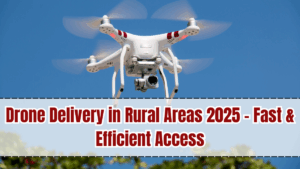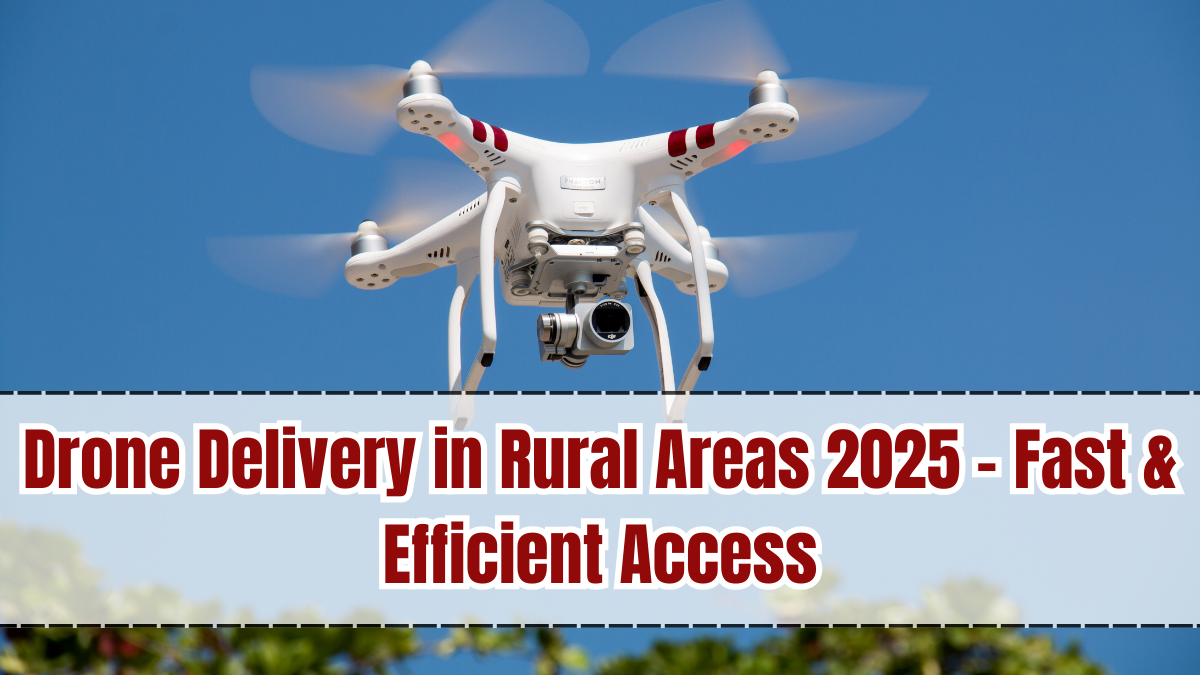Rural regions have always faced challenges when it comes to logistics and last-mile delivery. Poor road infrastructure, long distances, and limited transport facilities often delay access to medicines, groceries, and essential goods. In 2025, Drone Delivery in Rural Areas is revolutionizing the way products reach remote villages. By using unmanned aerial vehicles (UAVs) powered with advanced navigation systems, companies are ensuring that rural citizens enjoy faster, safer, and more reliable deliveries.

What is Drone Delivery?
Drone delivery is a logistics solution where small to medium-sized drones transport goods directly to customers. Unlike trucks or bikes that struggle in rural terrains, drones fly over obstacles and deliver packages to exact GPS coordinates.
These drones are designed with:
-
Lightweight but durable frames for carrying goods.
-
GPS and AI-based navigation systems.
-
Automated landing and drop-off mechanisms.
-
Real-time tracking for customers and service providers.
Why It Matters in 2025
The significance of Drone Delivery in Rural Areas 2025 is immense. For communities that previously waited days for medicines, agricultural supplies, or e-commerce orders, drones now deliver within hours. This technology also supports government initiatives, such as delivering vaccines, medical kits, and relief supplies during emergencies. As rural populations embrace digital commerce, drones provide a dependable solution to overcome logistical bottlenecks.
Benefits of Drone Delivery
The expansion of drone delivery services offers multiple advantages:
-
Faster Access: Essential goods reach remote areas in record time.
-
Cost Efficiency: Reduces dependency on trucks and fuel-intensive transport.
-
Healthcare Support: Ensures life-saving medicines and vaccines are delivered quickly.
-
Environmental Benefits: Electric-powered drones reduce carbon emissions.
-
E-commerce Growth: Online retailers can now reach customers in remote villages.
These benefits make drones a crucial link in bridging the urban-rural delivery gap.
Role of Technology
Drone delivery relies on a powerful combination of technologies. AI algorithms ensure efficient route planning, while IoT sensors track environmental conditions during flight. High-resolution cameras and obstacle-detection systems make navigation safer, even in rough weather. Blockchain technology is being tested for secure supply chain management, ensuring transparency in deliveries. Together, these advancements make drone delivery not just futuristic, but highly practical in 2025.
Government and Industry Initiatives
Governments and private companies are equally investing in drone delivery systems. In India, Africa, and parts of Southeast Asia, drones are already delivering blood samples and medicines to rural clinics. E-commerce giants are partnering with logistics startups to expand drone fleets. Regulatory authorities are also establishing drone corridors and guidelines to ensure safe operations. These initiatives are accelerating the adoption of drones in areas once considered unreachable.
Future of Drone Delivery
The future of Drone Delivery in Rural Areas is promising. By 2030, experts predict the use of larger drones capable of carrying heavier loads such as bulk food supplies or farming equipment. Integration with AI-powered logistics hubs will allow drones to operate autonomously at scale. Drone ports and charging stations will be established across villages, making aerial delivery a standard service for rural populations.
Conclusion
Drone Delivery in Rural Areas 2025 represents a breakthrough in logistics and accessibility. By overcoming geographical challenges and delivering essentials faster, drones are transforming rural life. They bring healthcare, commerce, and opportunity closer to people who were once left behind by traditional delivery systems. As technology matures, drone delivery will not just be an innovation but a lifeline for rural development.
FAQs
What is Drone Delivery in Rural Areas 2025?
It is the use of AI-powered drones to transport goods like medicines, groceries, and essentials to remote villages quickly and efficiently.
How do drones benefit rural areas?
They reduce delivery times, improve healthcare access, and allow rural communities to participate in e-commerce more actively.
Are drone deliveries safe?
Yes, drones are equipped with GPS, cameras, and obstacle-detection systems to ensure safe navigation and delivery.
What challenges do drone deliveries face?
High costs, limited carrying capacity, and strict regulations remain challenges, but these are being addressed with new technologies.
What is the future of drone delivery?
Future drones will carry heavier loads, operate autonomously, and integrate with logistics hubs to make aerial delivery a mainstream service.
Click here to know more.
